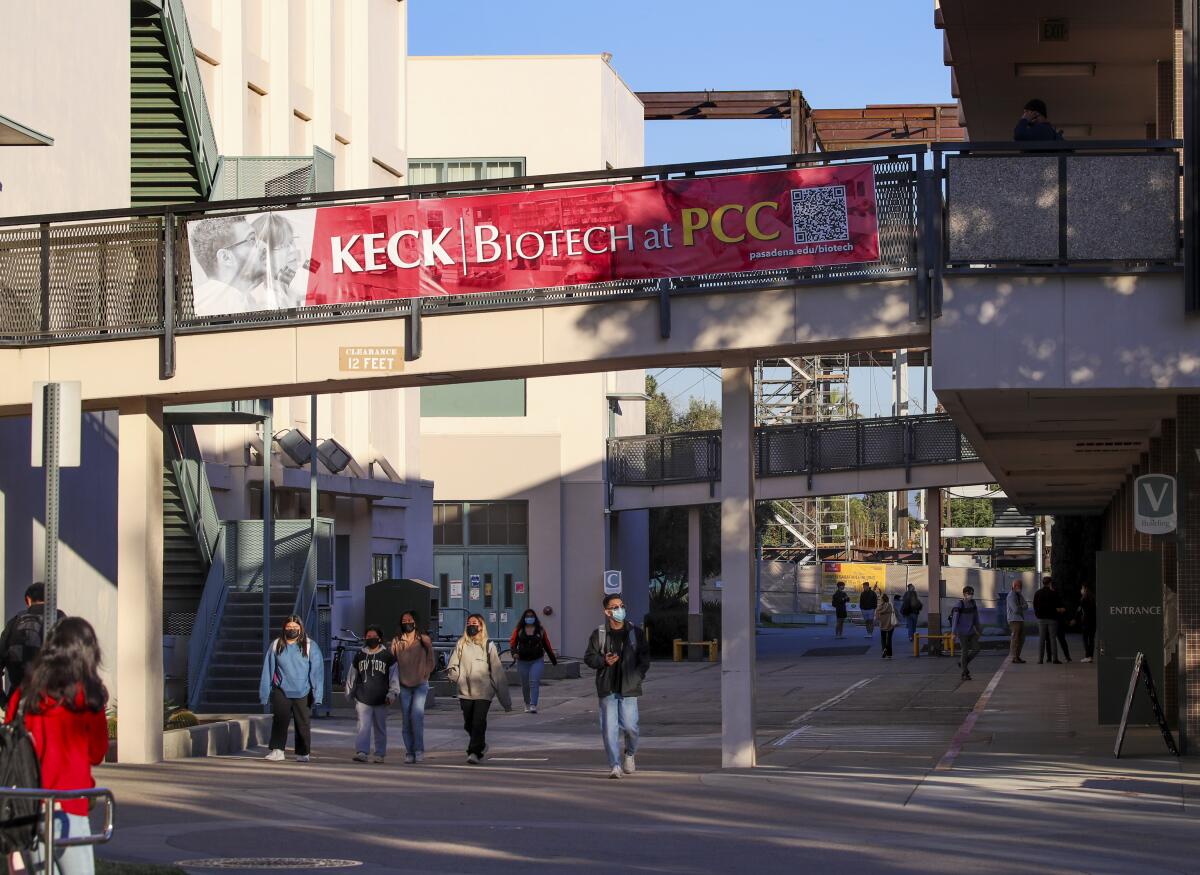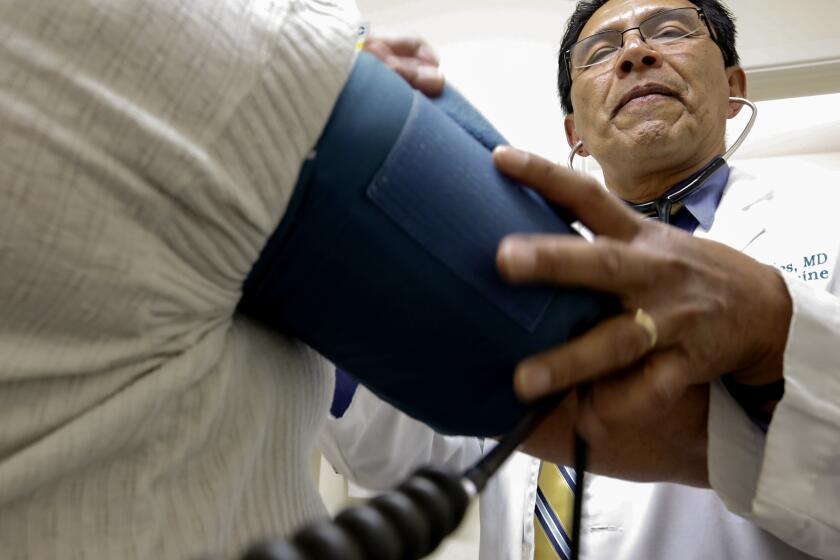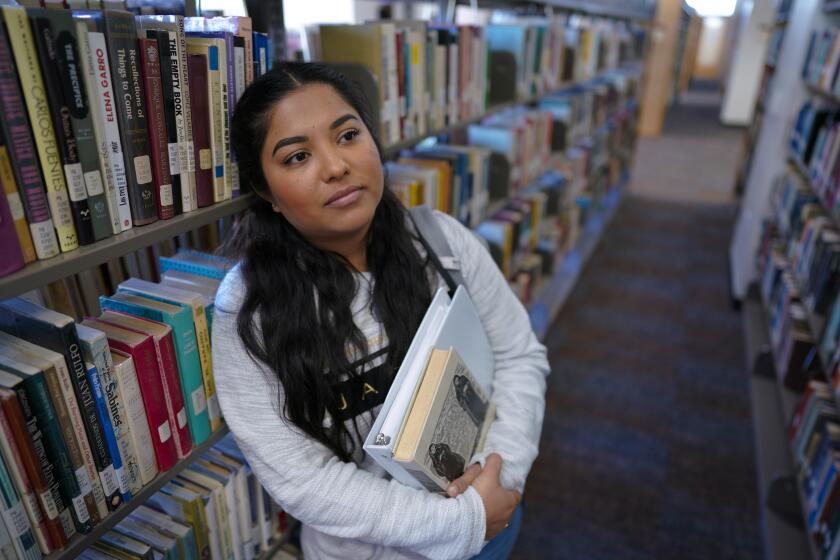Free money for post-COVID job training programs — for yourself or someone you help

To help ease the financial distress brought on by the COVID-19 pandemic, the federal government sent billions of dollars to the states for healthcare, unemployment benefits, internet connections and many other services.
California received so much, it’s had a tough time making use of it all. A case in point is the roughly $500 million it received to help cover the training costs faced by people who lost their jobs during the pandemic. Two years after the grant program started, less than 5% of the money has been awarded to grantees.
The Foundation for California Community Colleges and the California Student Aid Commission announced a new push Wednesday to get the grants into the hands of more students. One part of the effort is offering stipends of $1,000 or more to student “ambassadors” who help other students apply for the job-training funds. Larger amounts will be available to community groups that can connect workers affected by the pandemic to the training grants.
Here are the details of the grants and the stipends.
Who is eligible for the job training grants?
The Golden State Education and Training Grant program targets low- and moderate-income people who lost their jobs because of the pandemic. To qualify, you must:
- Enroll in a regional K12 adult education program, college, grad school or one of more than 110 approved community colleges and training programs. You will not be eligible, however, if you were enrolled at the time you lost your job.
- Attest that you were unable to find work at the same or better wages as your pre-pandemic job.
- Earn less per year than the income limits set by the state, which range from $42,800 for a single person with no dependents to $135,000 for someone with six or more dependents.
- Have less than $90,400 in household assets if you are dependent on someone else, or if you have dependents other than a spouse. If you are independent and have no dependents of your own, the limit is $43,000.
If you meet all these criteria, you’ll be eligible for a one-time grant that will be paid directly to the school or training program you enroll in. The grant is almost enough to cover the in-state tuition for an associate’s degree at a community college, which requires 60 units at $46 per unit. (The grant can be used for fees and other education-related purposes, not just tuition.)
Many software options will let you file your taxes and get your tax refund for free. And for most Californians, the tax deadline has been moved to Oct. 16, 2023, to file federal and state.
To apply, register for an account at the California Student Aid Commission site, or if you’re already registered, sign in and fill out the form online.
Students face thousands of dollars in other costs, including fees, books, food, housing and transportation. But there are other aid programs available to make degree and training programs more affordable for low- and moderate-income students, whether they be citizens or undocumented students. That includes the state’s Promise Grant program, which waives community college tuition for low-income Californians.
Enough money remains in the program to support more than 150,000 grants. And given how little of the training grant money has been spent, Gov. Gavin Newsom’s proposed budget calls for extending the program though June 2027.
California will soon require Medi-Cal recipients to prove their eligibility again. But it has a safety net for people who lose their coverage.
Who can be an ambassador?
The Foundation for California Community Colleges already enlists students to help spread the word about financial aid, CalFresh and other support services. Now it’s looking for ambassadors to promote the $2,500 training grants among their peers and in their communities, in the hope of doling out more funds.
According to the commission, student ambassadors must be at least 18 years old and enrolled in at least one unit in both the spring and fall semesters at a state community college, California State University or University of California campus. If accepted, they will be trained on the grant program, its eligibility requirements and the application process. They’ll also be given wireless devices to help the students they recruit fill out applications.
These ambassadors will do outreach from May through September, devoting 10 to 12 hours a month and earning a $1,000 stipend. Those who continue on through the fall and spring semesters will earn an additional $2,000.
To apply, you’ll have to fill out an online form that asks a number of questions related to your ability to recruit grant applicants, including what “techniques and strategies” you’d use and what relevant work or volunteer experiences you’ve had. If selected, you’ll be required to attend two virtual training sessions in May and one in-person session in June.
The foundation encourages interested students to apply by April 28, with ambassadors selected in early May. For more information, send an email to [email protected].
Low-income students who live in Mexico within 45 miles of the California border could pay in-state tuition at community colleges in San Diego and Imperial counties, under the new legislation.
What about community groups, nonprofits and other organizations?
The foundation is also looking for help from influential community-based groups that have “a well-established outreach network.” As with the student ambassadors, the point is to promote the training grants to people whose jobs were derailed by COVID-19.
Organizations interested in becoming “Education and Training Network Activation Partners” should fill out this form online to let the foundation know which communities they serve, how many people they typically reach and how they can be contacted. They can also register to attend a virtual information session on April 18 from 11:00 a.m. to noon.
According to the foundation, “Network Activation partners can range from large multilocation organizations such as the United Ways of California, down to smaller scale city food banks and other local resource centers.” Participating organizations will receive grants of $5,000 to $40,000, the foundation said.
About The Times Utility Journalism Team
This article is from The Times’ Utility Journalism Team. Our mission is to be essential to the lives of Southern Californians by publishing information that solves problems, answers questions and helps with decision making. We serve audiences in and around Los Angeles — including current Times subscribers and diverse communities that haven’t historically had their needs met by our coverage.
How can we be useful to you and your community? Email utility (at) latimes.com or one of our journalists: Jon Healey, Ada Tseng, Jessica Roy and Karen Garcia.
More to Read
Sign up for Essential California
The most important California stories and recommendations in your inbox every morning.
You may occasionally receive promotional content from the Los Angeles Times.














